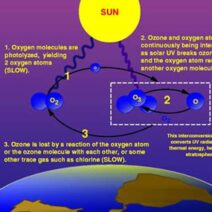The current global climate serves as a disparate tapestry, woven with threads of variability, urgency, and resilience. In the grand theater of environmental change, the stage is set for a narrative that resonates deeply with the survival of our species. As the stakes rise with every passing year, examining the intricate patterns that define our climate in this moment becomes imperative.
Across the globe, the phenomenon of climate change manifests a persistent and often treacherous dance, marked by shifting regimes. The alarming enhancement of atmospheric temperatures acts as a harbinger of disruptive weather patterns, unleashing torrential rains in some regions while rendering others parched under relentless drought. The relentless march of time renders the year 2025 a focal point in this narrative—a glance into a future that threatens to materialize unless concerted, global efforts are prioritized.
The essence of the climate crisis can be encapsulated in one striking metaphor: the Earth as a patient in the throes of fever. The fever, exacerbated by anthropogenic activities, triggers a cascade of symptoms, each more alarming than the last. From the thawing Arctic to the relentless wildfires ravaging ecosystems, our planet’s fever showcases the urgent need for intervention. The ongoing alterations in temperature, precipitation patterns, and the frequency of extreme weather events signify a stark departure from historical norms, underscoring the fragility of the systems that support life as we know it.
In 2023, an analysis reveals that global surface temperatures continue on a trajectory that mirrors the warnings issued by climatologists over the past decades. Data illustrates a worrying rise on the thermometer, with projections implying that the decade ahead could surpass temperatures previously deemed extreme. This alarming trend invokes a conundrum: will we remain passive observers, or will we rise to the occasion? The challenge lies not solely in acknowledging the symptoms; it requires a fundamental re-evaluation of our relationship with the natural world.
The Global Climate Shift Index emerges as an enlightening tool, assisting in grasping the broader narrative of climate variability. It encapsulates the multifaceted changes experienced worldwide, from escalating carbon footprints to unprecedented biodiversity loss. The index serves not just as a metric but as a clarion call for global citizens to engage in dialogues about sustainability and conservation. Each increment of change recounted through this index reveals the collective actions required to navigate our present and secure a livable future.
Moreover, the phenomenon of climate variability stretches beyond terrestrial realms. The oceans, often seen as vast and immutable, are themselves under siege. Rising sea levels due to polar ice melt instigate the slow encroachment of saltwater into coastal communities, threatening both livelihoods and habitats. This slow-motion catastrophe embodies a chilling metaphor: the sea, once a protective boundary, becomes a relentless tide of existential threat. Coastal regions must grapple with the tangible anxiety of displacement, a reality that accentuates the urgency for adaptive measures and robust infrastructure.
It is not solely geological and meteorological phenomena that invoke concern; the socio-economic ramifications of climate change weave an intricate narrative of injustice. Vulnerable populations, often the most affected by climate-induced disasters, bear the brunt of ecological degradation. The metaphorical ‘canary in the coal mine’ here is the inequitable distribution of resources, exposing the stark reality that those contributing least to climate change suffer disproportionately. Addressing this systemic inequity is vital for cultivating a holistic approach to climate resilience, one that seeks to empower marginalized voices. A just transition should weave environmental sustainability with social equity, ensuring inclusivity in the quest for solutions.
Any discourse on the global outlook must also integrate the critical dimension of climate action. While the forecast may appear bleak, hope emanates from movements advocating for change, innovation, and grassroots activism. Individuals and communities across the world are fervently employing renewable energy technologies, spearheading reforestation efforts, and championing sustainable farming practices. Their collective endeavors cultivate a burgeoning narrative of resilience, a testament to humanity’s capacity for transformation.
In navigating the perennial tumult of climate fluctuations, the importance of cooperation on a global scale must not be overlooked. International pacts and agreements serve as essential frameworks for collective action. As nations convene, there lies an opportunity—a canvas awaiting the artistry of collaboration—as disparate countries unite under the shared goal of preserving Earth’s resilience. Global cooperation remains crucial in harnessing the collective will to address this crisis, aspiring toward an emissions-neutral world.
The forthcoming years present a critical juncture. As the forecast looms—perhaps more daunting than ever—it beckons us to seize the moment with determination and resolve. The future of our planet hinges upon vigilance, innovation, and a renewed commitment to preservation. The climate narrative is at a crossroads, where our choices today will indelibly shape the legacy we leave for future generations. To engage proactively with the world’s pressing environmental challenges is to participate in the grand narrative of preservation, ultimately ensuring that the planet thrives for eons to come.
In this inexorable struggle against climate change, we are reminded that the Earth is not merely a backdrop to our lives; it is the very fabric of our existence. Let us embrace our role as stewards, unearthing the profound interconnectedness that binds humanity to the planet and each other. Time is of the essence, and through unified action, we can engender a world where harmony prevails over discord, securing a stable and vibrant climate for generations yet unseen.


